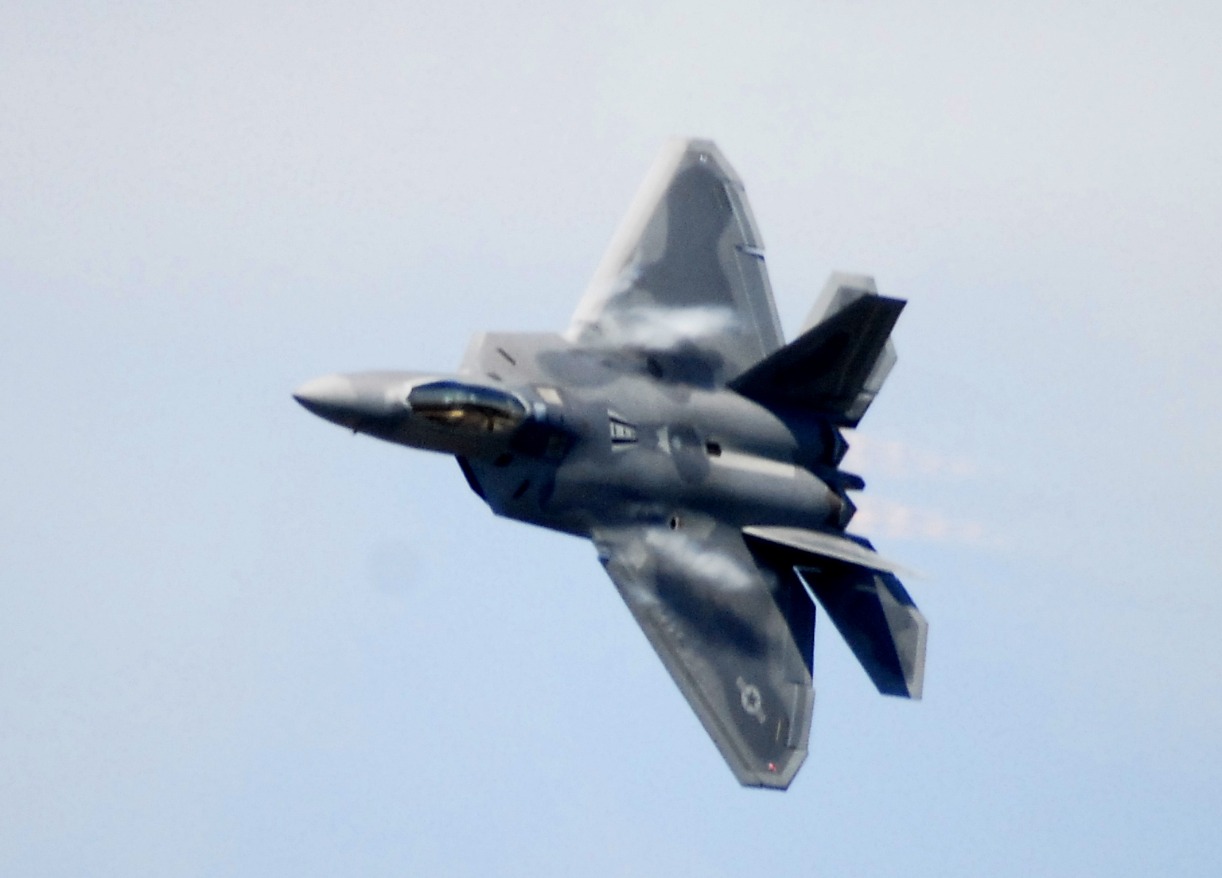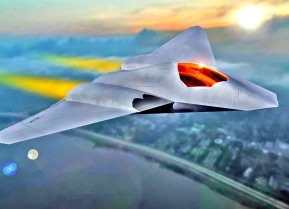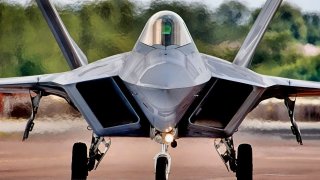The F-22 Raptor Defeated 108 Air Force Fighters in War Simulations
The F-22 Raptor, despite being the world's most advanced fighter jet, faces potential retirement as the U.S. Air Force pushes for the development of the Next Generation Air Dominance (NGAD) system.
Summary and Key Points: The F-22 Raptor, despite being the world's most advanced fighter jet, faces potential retirement as the U.S. Air Force pushes for the development of the Next Generation Air Dominance (NGAD) system.

-Critics argue that the NGAD's estimated $300 million per plane is unjustifiable, especially given the F-22's proven capabilities and the current economic challenges.
-The decision to cut the F-22 fleet from the originally planned 750 to around 150 due to the 2008 financial crisis further highlights the need for fiscal prudence. Instead of pursuing costly new projects, maintaining and expanding the existing F-22 fleet is proposed as a more strategic and financially responsible approach.
The F-22 Dominates All Other Aircraft. Why Does the Air Force Want to Kill It?
The United States Department of Defense cannot afford to continue operating as it has for the last several decades. Constantly increasing budgets (with far too much going to waste) to cover legacy systems that have exploding costs, massive delays, and rarely perform as advertised will not be allowed to go on.
That is especially true if the recent end of the petrodollar leads to what myself and others believe: which is the loss of the US dollar as the primary global reserve currency meaning that the US government cannot engage in the kind of deficit spending it has gotten used to (notably on defense) and the United States enters into a prolonged debt crisis.
Given that the Pentagon needs to face this reality sooner than later, one thing it can immediately do is to stop trying to build the wünderwaffe. Instead, the Pentagon should learn to use the incredible systems it already has at its disposal and to expand on them—as well as maintain them for as long as possible.
The Air Force, for example, must abandon its obsession with creating the sixth-generation warplane that they’ve dubbed as being part of the “Next Generation Air Dominance” (NGAD) system.
There’s no need for this, especially because the Air Force has a warplane that is already the world’s most advanced and effective fighter: the fifth-generation F-22A Raptor. And this bird will remain the top of its class globally for at least 20 years. Creating a new warplane that costs $300 million per plane (with a desired 200 in the offing), given the protracted financial crisis the United States is only at the start of, is both irresponsible and counterproductive—not just financially but strategically (because such systems will never be built).
The Government is Wrong About the F-22
America’s F-22A Raptor is a great example of the US government getting everything wrong. Well, almost everything. The Pentagon was correct in investing in the creation of the F-22 in the 1980s and supporting it as a replacement for its current fleet of fourth-generation warplanes. Where the Pentagon erred (and this is not entirely their fault) was in deprioritizing their plan to build a fleet of 750 F-22s meant to replace the F-15 Eagle.
That never happened, despite the investment in massive funds, resources, and time. And the reason was the Great Recession of 2008. You see, just as production was really ramping up for the F-22 program, which had suffered major cost overruns due to its technological complexity, the 2008 Financial Crisis occurred and the US government needed to cut some expenditures.
A new president, Barack Obama, had been elected at the height of the crisis. It was the forty-fourth president, Obama, who determined to cut the production line of the F-22—thereby freezing the program forever and keeping the F-22 fleet at barely one-third of what it was supposed to be.
The loss of that production line meant that no new F-22s could be built and, eventually, the program would have to be shuttered. Rather than look at restarting the production line and paying gobs of tax dollars for it, the Pentagon came to favor the creation of a next-generation warplane.
Never mind that it’d be infinitely more expensive than just investing in a restart of the F-22 production line. Or that whatever advances it would sport, they would be marginal because the F-22 was already so advanced. The Pentagon is intent on moving ahead.
But what other warplane in the world has a demonstrated track record of greatness, as the F-22 enjoys?
That Time the F-22 Had a 108-to-Zero Kill Ratio
The F-22 can dominate almost all other air systems the US military would face in combat today. Not only is it undefeated in the real world, but in every wargame simulation it participates in, the F-22 dominates all other aircraft in the battlespace.

As the Eurasian Times recently reminded audiences, “One notable instance is the Exercise Northern Edge 2006, where the F-22 demonstrated its prowess against as many as 40 enemy aircraft during simulated battles. Raptor pilots achieved an astounding 108-to-zero kill ratio against the best F-15, F-16, and F/A-18 jets, showcasing their dominance in the sky.”
Given these facts, it is astounding that the Pentagon even wants to replace these magnificent—and technologically advanced warbirds. But that is precisely what Washington desires. It is totally unnecessary and completely irresponsible, given the dire economic condition the United States finds itself in.

Author Experience and Expertise: Brandon J. Weichert
Brandon J. Weichert, a National Interest national security analyst, is a former Congressional staffer and geopolitical analyst who is a contributor at The Washington Times, the Asia Times, and The-Pipeline. He is the author of Winning Space: How America Remains a Superpower, Biohacked: China’s Race to Control Life, and The Shadow War: Iran’s Quest for Supremacy. His next book, A Disaster of Our Own Making: How the West Lost Ukraine, is due October 22 from Encounter Books. Weichert can be followed via Twitter @WeTheBrandon.
All images are Creative Commons.


